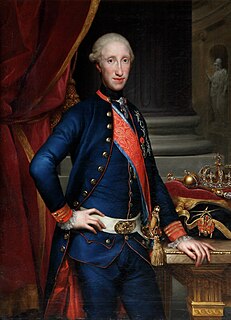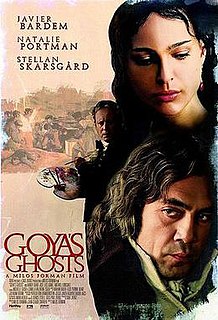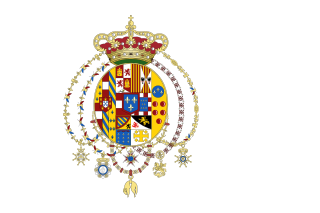Related Research Articles

The Medieval Inquisition was a series of Inquisitions from around 1184, including the Episcopal Inquisition (1184–1230s) and later the Papal Inquisition (1230s). The Medieval Inquisition was established in response to movements considered apostate or heretical to Roman Catholicism, in particular Catharism and Waldensians in Southern France and Northern Italy. These were the first movements of many inquisitions that would follow.
The Roman Inquisition, formally the Supreme Sacred Congregation of the Roman and Universal Inquisition, was a system of tribunals developed by the Holy See of the Roman Catholic Church, during the second half of the 16th century, responsible for prosecuting individuals accused of a wide array of crimes relating to religious doctrine or alternative religious doctrine or alternative religious beliefs. In the period after the Medieval Inquisition, it was one of three different manifestations of the wider Catholic Inquisition along with the Spanish Inquisition and Portuguese Inquisition.

Charles III was King of Spain (1759–1788). He also was Duke of Parma and Piacenza, as Charles I (1731–1735); King of Naples, as Charles VII, and King of Sicily, as Charles V (1734–1759). He was the fifth son of Philip V of Spain, and the eldest son of Philip's second wife, Elisabeth Farnese. A proponent of enlightened absolutism and regalism, he succeeded to the Spanish throne on 10 August 1759, upon the death of his childless half-brother Ferdinand VI.

Ferdinand I, was the King of the Two Sicilies from 1816, after his restoration following victory in the Napoleonic Wars. Before that he had been, since 1759, Ferdinand IV of the Kingdom of Naples and Ferdinand III of the Kingdom of Sicily. He was also King of Gozo. He was deposed twice from the throne of Naples: once by the revolutionary Parthenopean Republic for six months in 1799 and again by Napoleon in 1805, before being restored in 1816.

Constance I was reigning Queen of Sicily from 1194–98, jointly with her spouse from 1194 to 1197, and with her infant son Frederick II, Holy Roman Emperor, in 1198, as the heiress of the Norman kings of Sicily. She was also Holy Roman Empress and later Dowager by marriage to Henry VI, Holy Roman Emperor.

The Kingdom of Naples, also known as the Kingdom of Sicily, was a state that ruled the part of the Italian Peninsula south of the Papal States between 1282 and 1816. It was established by the War of the Sicilian Vespers (1282–1302), when the island of Sicily revolted and was conquered by the Crown of Aragon, becoming a separate kingdom also called the Kingdom of Sicily. In 1816, it reunified with the island of Sicily to form the Kingdom of the Two Sicilies.

Agathaof Sicily is a Christian saint. Her feast is on 5 February. Agatha was born in Catania, part of the Roman Province of Sicily, and was martyred c. 251. She is one of several virgin martyrs who are commemorated by name in the Canon of the Mass.

Goya's Ghosts is a 2006 biographical drama film, directed by Miloš Forman, and written by him and Jean-Claude Carrière. The film stars Javier Bardem, Natalie Portman and Stellan Skarsgård, and was filmed on location in Spain during late 2005. The film was written, produced, and performed in English although it is a Spanish production.

Maria Amalia of Saxony was born a princess of Poland and Saxony, and became Queen of Naples and Sicily from 1738 until 1759, and then Queen of Spain from 1759 until her death in 1760 by marriage to Charles III of Spain. The arranged marriage produced many children who survived into adulthood, including Charles IV of Spain. A popular consort, she oversaw the construction of the Caserta Palace outside Naples as well as various other projects, and she is known for her influence upon the affairs of state.
The Aix-en-Provence possessions were a series of alleged cases of demonic possession occurring among the Ursuline nuns of Aix-en-Provence in 1611. Father Louis Gaufridi was accused and convicted of causing the possession by a pact with the devil, and he was executed by strangulation and his body burned. This case provided the legal precedent for the conviction and execution of Urbain Grandier at Loudun more than 20 years later.

Scipione Rebiba was an Italian prelate of the Catholic Church, a protégé of Gian Pietro Carafa, who became Pope Paul IV. He held a variety of positions in the Church hierarchy, including some of the most senior. He introduced the Inquisition to Naples in the 1550s and became a cardinal in 1555. He is mostly known today for having been the earliest bishop to whom most Roman Catholic bishops can trace their apostolic succession, as it is unknown who consecrated Rebiba.
In the historical folklore of Sicily, Doñas de fuera were supernatural female beings comparable to the fairies of English folklore. In the 16th to mid-17th centuries, the donas de fuera also played a role in the witch trials in Sicily.
The history of the Jews in Sicily deals with Jews and the Jewish community in Sicily which possibly dates back two millennia. Sicily is a large island off the Southern Italian coast. There has been a Jewish presence in Sicily for at least 1400 years and possibly for more than 2000 years.

The Kingdom of the Two Sicilies was a kingdom in Southern Italy from 1816 to 1860. The kingdom was the largest sovereign state by population and size in Italy before Italian unification, comprising Sicily and all of the Italian Peninsula south of the Papal States, which covered most of the area of today's Mezzogiorno.

Serafina of God, O.Carm.,, also known as Seraphine of Capri, was the founder of seven Carmelite monasteries of nuns in southern Italy. The cause for her canonization has been formally accepted by the Holy See, which has declared her to have lived a life of heroic virtue.
Guglielma or Wilhelmina of Bohemia was an Italian noblewoman, possibly of Czech/Bohemian origin, according to her own assertions the daughter of king Ottokar I of Bohemia. She practiced and preached an alternative, feminized version of Christianity in which she predicted the end of time and her own resurrection as the Holy Spirit incarnate. She is now the unofficial patron saint of Brunate. A painting from ca. 1450 depicting Guglielma blessing Abbess Maddalena Albrizzi and an unknown donor hangs in the Church of San Andrea in Brunate. Barbara Newman has attempted to identify the kneeling figures in the painting as Guglielma's followers, Sister Maifreda da Pirovano and Andrea Saramita, but this is contested.
María de los Dolores López, known as Beata Dolores, was a Spanish visionary executed for heresy.

Leonor de Cisneros, was a Spanish Protestant who was executed for heresy by the Spanish Inquisition and regarded as a Protestant martyr. Her case belongs amongst the most famed of the Spanish Inquisition.
Giulia Carafa Cantelmo Stuart, duchess di Cassano (1755-1841) was an Italian courtier. She was a supporter of the Parthenopean Republic and alongside her sister, she was known as one of the Republic's two Madri della Patria.
The Witch trials in the Italian states of present-day Italy are a complicated issue. Witch trials could be managed by a number of different secular courts as well as by the Roman Inquisition, and documentation has been only partially preserved in either case. A further complication is the fact that Italy was politically split between a number of different states during the time period in which the witch trials occurred; and that historiography has traditionally separated the history of Northern Italy and Southern Italy. All of these issues complicate the research of witch trials in present-day Italy, and the estimations of the intensity and number of executions has varied between hundreds to thousands of victims.
References
- ↑ S. Horner; History of the Kingdom of Naples 1734-1825